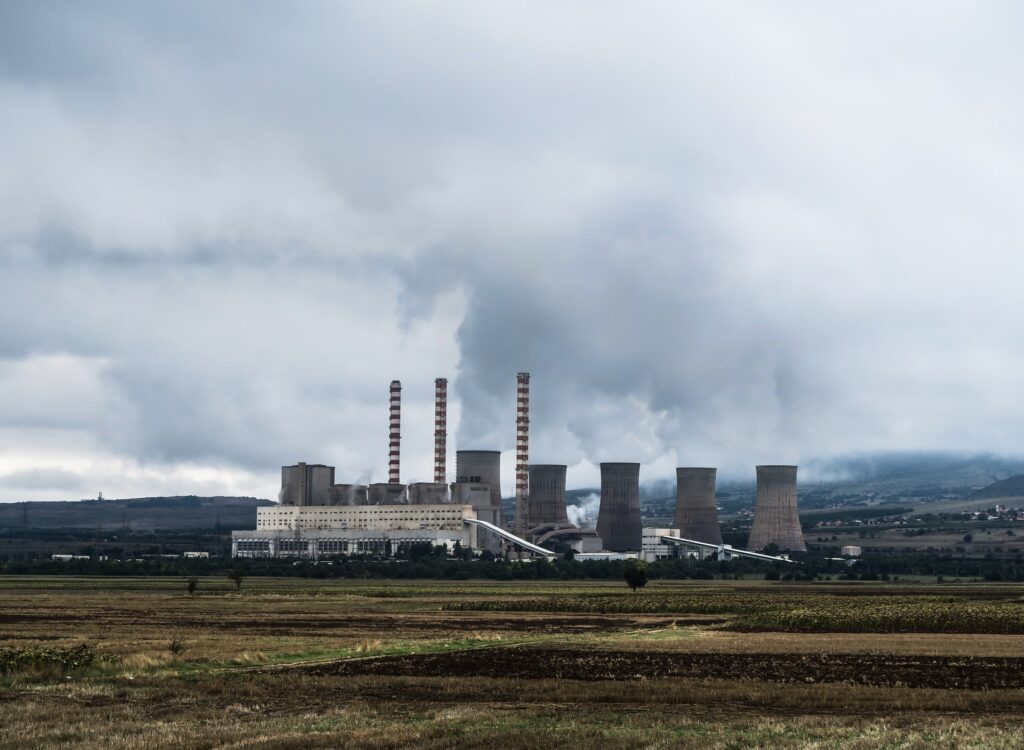
By Ollie Campbell, PPE Student at Warwick University
Located on the Fifth Clyde of Scotland’s West coast, Hunterston B power station has generated electricity for 77.9 million homes since its opening in 1976. Owned by EDF energy, this power plant was once seen as the future of eco-friendly electricity production. On January the 7th, the twin nuclear reactors were shut down for the last time after a series of cracks were found in the graphite cores. This plant was built in an unsuccessful attempt to export huge amounts of electricity across Europe. However, the plant had been able to power Scotland since the great oil-price shock of 1973.
These reactors consistently produced over 1 gigawatt of electricity a day — something that other renewable sources would struggle to achieve, especially during winter. The consequent slack in electricity production is currently held up by burning natural gas, which produces around 30% of the UK’s electricity production. As well as electricity, natural gas heats 85% of UK houses, usually those old and poorly insulated. The UK’s unusually high reliance on natural gas has considerably driven the prices up last year.
As a result of the rapid price level increase, inflation has soared above 5%, the highest rate in over a decade. Despite the raising of caps allowing energy companies to charge more, over 40 companies have gone bankrupt in 2022 due to the uncontrollable rise in gas prices. The Government caps are set to be under review in the next few months. According to Energy UK, energy bills are likely to increase up to 50% in the next year, taking the average bill to over £2000 a year.
This increase in bills has put large pressure on the Cabinet, which is formulating several ideas to reduce the strain on the average household. There are the obvious solutions of financial packages to the poorest households — removing VAT (although only 5%) and subsidising companies allowing them to charge less. However, none of them seems to be sufficiently addressing the issue. Labour party members have suggested a windfall tax on any oil-and-gas companies in the North Sea, which are massively profiting from rising prices.
Anyone can see that these policies create a monumental trade-off. For example, raising taxes, which in a post-pandemic world will likely be less popular than the bill increase. Despite all these talks of alternative measures, the Government has not implemented any changes yet. Dieter Helm of Oxford University explains it perfectly: “none does more than tinker around the edges of an energy system that is likely to remain heavily reliant on gas, and to get pricier too.”
The Conservatives’ 2019 election manifesto promised carbon neutrality by 2050 or at least movement towards that goal. Over the last decade of Conservative Governance, coal has dropped from providing just under 20 Terawatts per hour to less than 1. This has been replaced by renewable wind and solar energy production systems. The Government have further announced that they hope for a 25% rise in offshore wind power by 2030. There is only one issue with this — renewable energy sources are heavily unreliable. A considerable backup system is needed for renewable energy to be a promising candidate. For now, grid size batteries are still in their infancy, so electricity storage for longer periods of time is not yet an option.
Nuclear power is potentially the best electricity generating source in terms of low-carbon and reliability. However, it has a significant downside — it is a huge safety hazard. As a result, nuclear power has provided less energy in recent years, which only leaves a bigger gap to be filled by gas burning. Half of the remaining nuclear power stations in Britain are due for closing by 2024. More risk-taking ministers are willing to go the other way and build more nuclear power stations, hoping they will not malfunction. However, so far only one is under construction, and it is already over budget as well as behind schedule.
Huge policy changes are required from the Government for any change to come about. There is no avoiding the immense costs that renewable energy requires, both, in its implementation and then in its storage attempts. The current Government target is very ambitious — aiming for carbon-neutral electricity production by 2035. As it is more than unlikely that the UK becomes completely renewable sources reliant in that time, carbon capture technology will need to be fitted in gas plants. This has never been achieved on a significant scale anywhere in the world. But if the Cabinet is serious about reaching this target, gas prices will only go one way.
Whatever the outcome, everyone will end up paying more. This could be through bills or taxes or both. Any decent Government policy should help with the costs, but this will take years before any consistency or reliability comes from either electricity products or the prices.
Ollie Campbell
I’m Ollie Campbell, a current undergraduate PPE student at the University of Warwick. I am interested in political journalism and analysis especially on the economic side. As an aspiring politician I spend a large amount of free-time studying the workings of politics and am a member of the Conservative groups both at Uni and at home.